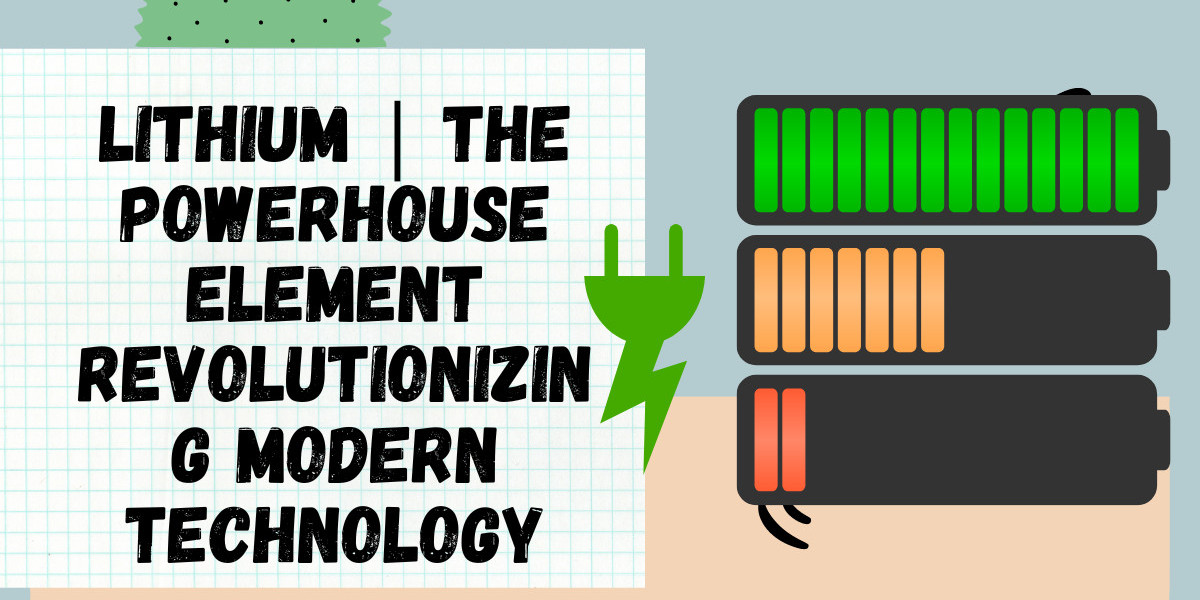Lithium is a chemical element with the symbol Li and atomic number 3. It is a soft, silvery-white metal that is highly reactive and flammable. It belongs to the alkali metal group and is the lightest metal known. In nature, lithium is found primarily in mineral deposits and brine pools. It has unique properties that make it essential for various applications, particularly in the modern technological world.
Properties of Lithium
Lithium has several distinctive properties that contribute to its diverse uses. It has a low density, making it lightweight. It is also known for its high electrochemical potential, which allows it to store and release energy efficiently. The melting point of lithium is around 180.5 °C (356.9 °F), and it has a boiling point of 1342 °C (2448 °F). These properties make it suitable for high-performance applications.
Lithium reacts readily with water and air. When exposed to moisture, it forms lithium hydroxide and hydrogen gas. This reactivity necessitates careful handling and storage. Despite its reactivity, lithium is non-toxic and poses minimal environmental risks when used appropriately.
Applications of Lithium
Lithium in Batteries
The most significant use of lithium today is in rechargeable batteries, particularly lithium-ion (Li-ion) batteries. These batteries power a wide range of devices, from smartphones and laptops to electric vehicles (EVs) and renewable energy systems. The demand for lithium in battery production has surged due to the increasing reliance on portable electronics and the transition to electric vehicles.
Lithium-ion batteries offer several advantages over traditional batteries. They have a high energy density, meaning they can store more energy in a smaller volume. They also have a longer lifespan and a lower self-discharge rate, making them ideal for modern applications. The growing popularity of electric vehicles has led to a significant increase in lithium extraction and production.
Lithium in Medicine
In medicine, lithium is used primarily as a mood stabilizer in the treatment of bipolar disorder. It helps to regulate mood swings and reduce the risk of suicide in patients with this condition. The exact mechanism of action of lithium in the brain is not fully understood, but it is believed to influence neurotransmitter levels and promote neuroprotection.
Lithium therapy requires careful monitoring due to potential side effects, including weight gain, gastrointestinal issues, and thyroid dysfunction. Despite these risks, many patients benefit from lithium treatment, leading to improved quality of life.
Lithium in Industry
Lithium is also used in various industrial applications. It is a crucial component in the production of glass and ceramics, where it enhances thermal resistance and lowers melting temperatures. Lithium compounds are employed in lubricating greases and as additives in aluminum production.
In the aerospace industry, lithium is used to create lightweight materials, improving fuel efficiency in aircraft. The pharmaceutical industry uses lithium in the synthesis of drugs and as a reagent in chemical reactions.
Lithium in Renewable Energy
With the increasing focus on renewable energy, lithium has become vital in energy storage solutions. Lithium-ion batteries are essential for storing energy generated by solar and wind power. These batteries allow for the efficient use of renewable energy by storing excess energy for later use. As the world moves towards sustainable energy sources, the demand for lithium in energy storage solutions is expected to grow.
Lithium Extraction and Production
The extraction of lithium is typically done through two methods: hard rock mining and lithium brine extraction. Hard rock mining involves extracting lithium from spodumene, a mineral rich in lithium. This method is often more expensive and less environmentally friendly.
Lithium brine extraction, on the other hand, involves pumping brine from underground reservoirs to the surface, where it evaporates in large ponds. This method is more cost-effective and has a lower environmental impact. Major producers of lithium include Australia, Chile, and China, which together account for a significant portion of the global supply.
Environmental Impact of Lithium Extraction
While lithium is essential for modern technology, its extraction can have environmental consequences. The process of mining and brine extraction can lead to habitat destruction, water depletion, and pollution. For example, lithium brine extraction requires significant amounts of water, which can impact local ecosystems and communities.
To mitigate these effects, companies are exploring more sustainable methods of lithium extraction. Innovations in recycling lithium from used batteries and improving the efficiency of extraction processes are essential steps toward reducing the environmental footprint of lithium production.
The Future of Lithium
The future of lithium looks promising, driven by the growing demand for clean energy and advanced technology. As the world transitions to electric vehicles and renewable energy sources, the need for lithium is expected to increase significantly. This surge in demand presents both challenges and opportunities for the lithium industry.
Advancements in battery technology, such as solid-state batteries, may change the landscape of lithium use. These batteries promise higher energy densities and improved safety, potentially reducing the reliance on lithium. However, for the foreseeable future, lithium will remain a critical component in energy storage and electronic devices.
Conclusion
Lithium is a remarkable element that plays a vital role in our modern world. Its unique properties and applications make it indispensable in technology, medicine, and industry. As we continue to innovate and seek sustainable solutions, the importance of lithium will only grow. Understanding its uses, benefits, and environmental implications is essential for a sustainable future.



